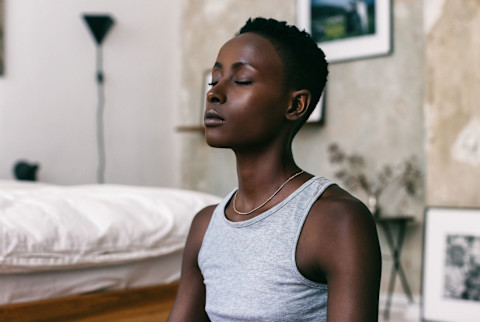
Why is it that we are unhappy when unintentionally mind-wandering? Because when we aren't present, we can easily get stuck in ruminating, reliving, and regretting the past, or fast-forwarding, catastrophizing, and worrying about the future. This unintentional, negative mind-wandering causes us to feel distracted and unhappy. Also in high-stress situations, we are more prone to unintentional mind-wandering. Sound familiar?
You may be thinking, "I actually enjoy daydreaming, reminiscing, and just letting my mind wander. It's relaxing for me." I'm not suggesting that you give up intentional mind-wandering or daydreaming, as when it's intentional, it actually supports creativity, positive emotions, insight, relaxation, and helps us to better plan for the future. That intention is presence, and it unfolds in a specific way in our everyday lives.
Here are three ways you can let go of wandering thoughts and truly stay present:
More presence, less autopilot.
We spend much of our time on autopilot: We walk, eat, commute, and even talk without clear awareness of what we are doing. We're just "going through the motions," guided by our routines and habits. Have you ever had the experience of finding yourself following a familiar route to one of your usual destinations and passing your intended stop? Or calling one person when you intended to call another? While we may dismiss such occurrences as inconsequential, unpleasant side effects of our busy lives, they are useful illustrations of the frequent mismatch between where we are physically at any given moment and where our minds are.
It's not easy to pause and be present for more and more moments. Living intentionally rather than automatically means that we can actually choose what's next rather than remaining entrenched in our habits. Not doing so means missing much of our lives as we rush around on autopilot. Presence brings a fresh lens to our lives, allowing us to see things as if for the very first time, reinhabiting right now.
The solution? Pick one quick activity you do every day on autopilot and repurpose it to time when you can be fully aware, whether it's taking a shower and feeling the water on your skin, or driving and feeling your hands on the steering wheel. Notice the difference for yourself. If you don't notice anything, that's OK—that doesn't mean it isn't working or you aren't doing it right. Be patient, persist, and try it with another activity!
More sensing, less preoccupation with thinking.
We tend to spend a lot of time in our heads, lost in our thoughts that form a kind of filter for thinking and overthinking things rather than experiencing them directly, which translates to less time spent in the present. We think not only about our feelings and sensations—we even think about our thoughts. Thinking can overpower our ability to sense and feel, which often leads us to create our own stressful interpretations of events. A single situation can lead us to a wide range of thoughts and interpretations, and it is these thoughts and interpretations—rather than the situation itself—that shape how we feel.
To make matters even worse, we are often unaware of our interpretations of situations, and that's where presence can be especially useful. When we do find ourselves lost in thinking, we can learn to shift our attention to how we feel in order to try to relate directly to the experience. Unfortunately, the ability to refocus our attention in this way is not a switch we can flip on and off. Managing our attention so that we can directly sense our experiences, rather than just relate to them through our thoughts, is a skill set that takes time and practice to develop.
Think of a slight, insult, or sadness you have felt recently, and have a look at what went through your mind. Did you feel angry, sad, or? We each have our own "go-to" emotion. Just being aware of this is a solid starting point for more presence.
More living in the present, less living in the past or future.
Being in the present is about being here, not getting there or getting back there. I'm wondering if you are present with me on this page right now, or have your thoughts whisked you off to think about dinner plans or the movie you saw last night? It's pretty amazing that we can travel to different times and places in our minds, actually feeling that we are in the past or present. While it's beneficial to have thoughts about our past and future as part of our present experience, with presence, we can have thoughts about the past or present, but we experience them with intention, as part of our present experience.
Unintentionally ruminating about the past can mean reexperiencing the pain of past losses, while worrying about the future can mean dread of disappointments that very well may never occur. Examples would include replaying in our minds the job interview we are certain we messed up or worrying about how our teen will ever get into college. The more we can disengage from unintended mental time travel, the more we can fully inhabit and enjoy the present moment.
Furthermore, when we are not present, we are most likely heading into a downward spiral full of negativity. Endlessly reexperiencing the pain of our past failures and future worries is both exhausting and stressful. Unfortunately, the more we dwell on the negative, the more our brains become accustomed to dwelling on the negative and continue to do so.
Try it out for yourself. The next time you become aware that your thoughts are in the past or present, take a moment to look at them–are they negative, repetitive, about you? The first step is becoming aware, pausing for the present, so just a few more seconds of being present today can begin to make a difference in how you feel.
